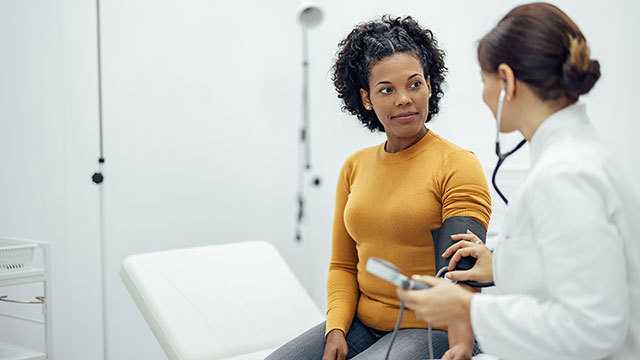Painful periods
It is not uncommon for women to be told that pain and cramping with periods is just a normal part of life. This is a common misperception and periods should not produce more than minor discomfort. If you are experiencing severe pain with your periods, it’s a good idea to talk to a health provider as there may be a reason behind your pain. Some causes of painful periods are not serious and are easy to treat, but others are more serious and can be a sign of an underlying serious medical condition. A trained and certified women’s health provider can help determine which tests might be necessary to diagnose the cause of your painful periods, and recommend an appropriate course of treatment.
Understand your periods better.
Take a self-assessment quiz to learn more about your symptoms.

About painful periods
Painful periods (dysmenorrhea), including severe cramping, affect approximately half of all menstruating women. The pain results from chemicals released to breakdown the lining of the uterus, and is most common just before the start of a period and continuing for the first few days of the cycle. The pain with periods that begins when young women begin menstruation and continues monthly is called primary dysmenorrhea. For many women with primary dysmenorrhea, the pain gets better over time, improving with age or after childbirth.
Secondary dysmenorrhea occurs when there is a disorder of the reproductive system that is causing pain during periods. This pain may start before a period begins, and often continues throughout the cycle and for several days after menstruation ends. The pain tends to get worse over time. This pain is stronger than menstrual cramps and can be painful enough that it keeps women from being able to participate in work, school, exercise, or other activities in life. Sometimes, women “curl up in a ball” and are unable to leave their bed for a few days during their menstrual cycle. Some conditions that can cause secondary dysmenorrhea are:
- Endometriosis: 1 progressive disorder in which the tissue inside the uterus—the endometrium—is found outside the uterus.
- Adenomyosis: a type of endometriosis where the lining of the uterus grows within the muscle wall of the uterus.
- Fibroids: noncancerous growths in the muscle tissue of the walls of the uterus.
Lifestyle tips
Treatment options
At your visit, your doctor will discuss your history with you and may perform a pelvic examination or pelvic ultrasound to help determine the cause of your painful periods. Treatments for painful periods and severe cramping vary, depending on the cause of the pain, your age and whether you want to have children. Medical therapies are usually the first line of treatment, and there are surgical procedures to treat some of the conditions that cause painful periods.
Not sure where or how to get started? Our specialists are ready to listen. Schedule an appointment with an OBGYN to get started.
Frequently asked questions
Contact Us
Talk to a care navigator or schedule an appointment at the Women’s Health & Wellness Center.
